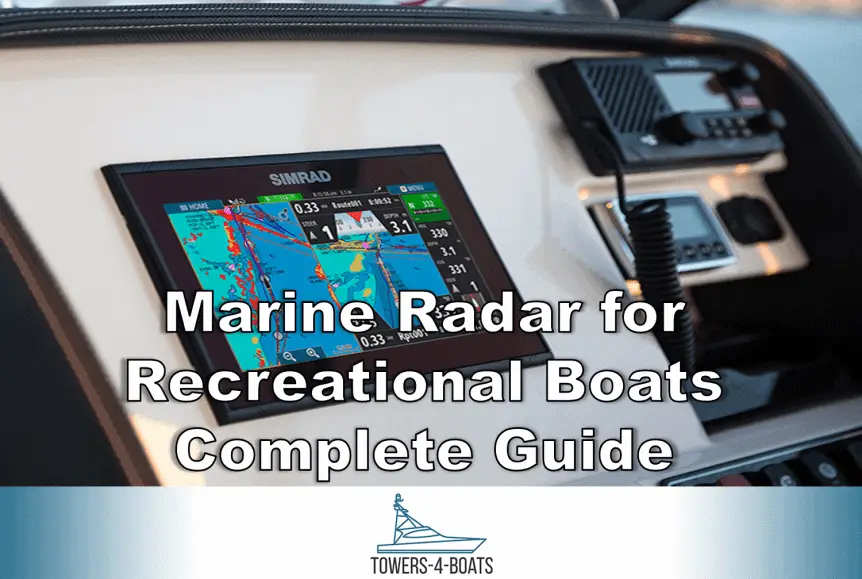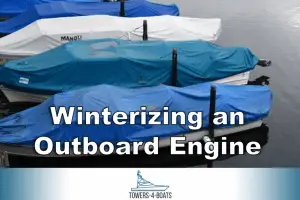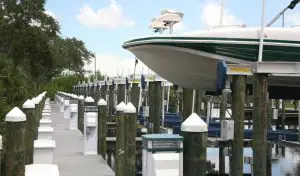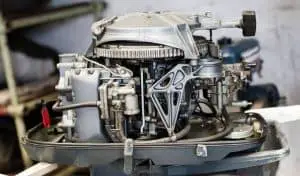How to Use Marine Radar
For some boaters, radar is the most critical piece of equipment they possess. Yet it’s also one of the most misunderstood items. Here’s a look at how marine radar units work, and what makes them so worthwhile.
Related Article: How to Pick the Best Chartplotter for Your Boat
How Does Radar Work?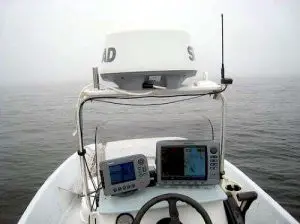
All radar works by sending out a beam of electromagnetic energy, in this case microwaves, and recording where those waves hit solid objects and get bounced back to the unit. With some fancy math, the unit can determine the bearing to an object and its distance from the boat. If you watch the movement of a return over a period of time, you can gauge its course and speed (assuming it’s moving at all).
While most people realize that radar helps boat pilots see other boats during times of low visibility, traffic is just one of the many things that a radar can help you spot. Radar beams will reflect off any solid object, so it will reliably show buoys and navigation markers, shorelines and landmasses, pilings and docks, and big things like areas of rain showers or tiny things like birds.
Radar units are sold in a wide variety of power outputs measured in watts, and ranges, measured in nautical miles. Truthfully, the most significant factor that affects how well it will work is how high it can be mounted. A radar, just like your VHF radio, works by line of sight only. It cannot see around the curve of the earth, so it’s only going to spot things that lie over the horizon if those things are really tall.
Some things reflect radar waves much better than others. Unfortunately, small curvy fiberglass boats are one of the hardest things for it to see. For this reason, many small boats carry radar reflectors on board. Most navigational markers and buoys have built-in reflectors to make them as visible as possible. Some even have electronic returns that project a unique morse code identifier onto your screen after your radar hits them!
Advantages of Radar
The main advantage of radar is that, unlike many of the other electronic toys in your toolbox, the radar is showing facts. While the GPS signal is often subject to errors and the charts your MFD uses may be inaccurate, the radar is showing you a real-time picture of what conditions actually are. You can use it to take bearings to objects for navigation. You can use it to calculate your actual range to an object. So the radar is one of the most powerful navigational tools you have onboard, as long as you know how to use it.
Collision avoidance is the radar’s strong suit, though. The COLREGs, the international rules of the boating road, give specific right-of-way for vessels that have been identified by radar. In dark or low visibility conditions, the radar is an indispensable safety tool.
Fishermen use radar to spot birds or flocks of birds since birds are often where the fish are. And boaters who are out during the summer months know that radar will pick up precipitation. Therefore, they can watch thunderstorms grow and move, and plan their trip home to avoid the bad weather.
Traditional versus Broadband Radar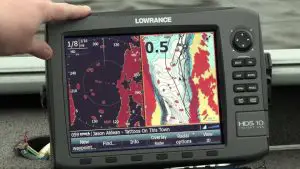
Even though marine radars have been around for a long time, there have been many great advances in recent years. That means that you want to research carefully, since going to the store and buying the current model might not mean you’re getting the best technology.
The latest HD and broadband radar are much better at discerning objects that are very close to the boat. Navico’s Broadband 3G and 4G radars, for example, can see individual dock pilings within a boat length of the vessel. They also use significantly less power than their predecessors.
How to Use a Marine Radar
Since radars these days plug into your chartplotter or MFD, there is very little for the operator to do. They usually have automatic settings that filter out the clutter and false returns.
The gain control is the primary control on a radar. It controls the unit’s sensitivity. As you increase the gain, you will see more and more clutter and backscatter appear on the screen. If you are looking for faint targets that are far away, you can increase the gain and then see what returns remain steady. False echos will jump around or disappear, while actual targets will remain more or less constant.
Radar units usually also have preset modes for reducing unwanted noise during operations. Sea clutter settings are designed to minimize the returns made by large waves, while rain clutter reduces the noise made by precipitation. By removing the raindrop returns, you can continue to use your unit in low visibility caused by rain.
Another helpful function of having your radar integrated into your chartplotter is the ability to overlay the radar information on top of a navigational chart. This way, you can clearly match shorelines to their charted counterparts, and most navigation markers should line up too. Returns that show where nothing is marked on the chart are likely other vessels. You can also use the chart overlay when zoomed out to the radar’s maximum range settings to see if you spot weather moving through, like localized summer thunderstorms. For small storms, like those common in the Gulf Coast and Florida, you can ofter use your radar as a thunderstorm avoidance tool.
Using MARPA Functions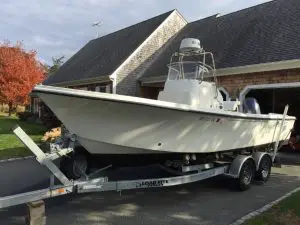
MARPA, or mini-automatic radar plotting aid, is a tool built into many chartplotters that is helpful. To make it work, you might need some extra equipment, like a digital compass. When it is up and running, the radar will detect a target and track it for you. You can then view its track, course, and speed to determine if it is a hazard to your vessel.
Read our article about Chartplotters and Tablets.
Conclusion
Many small boaters in warm climates would consider a radar unit to be a luxury. But in many different parts of the world, even the smallest vessels have a radar onboard. This enables them to operate in all kinds of conditions, from the dark of night to the thickest pea-soup fog. Radar reduces stress on the operator by helping them see. Radar is your second set of eyes.

